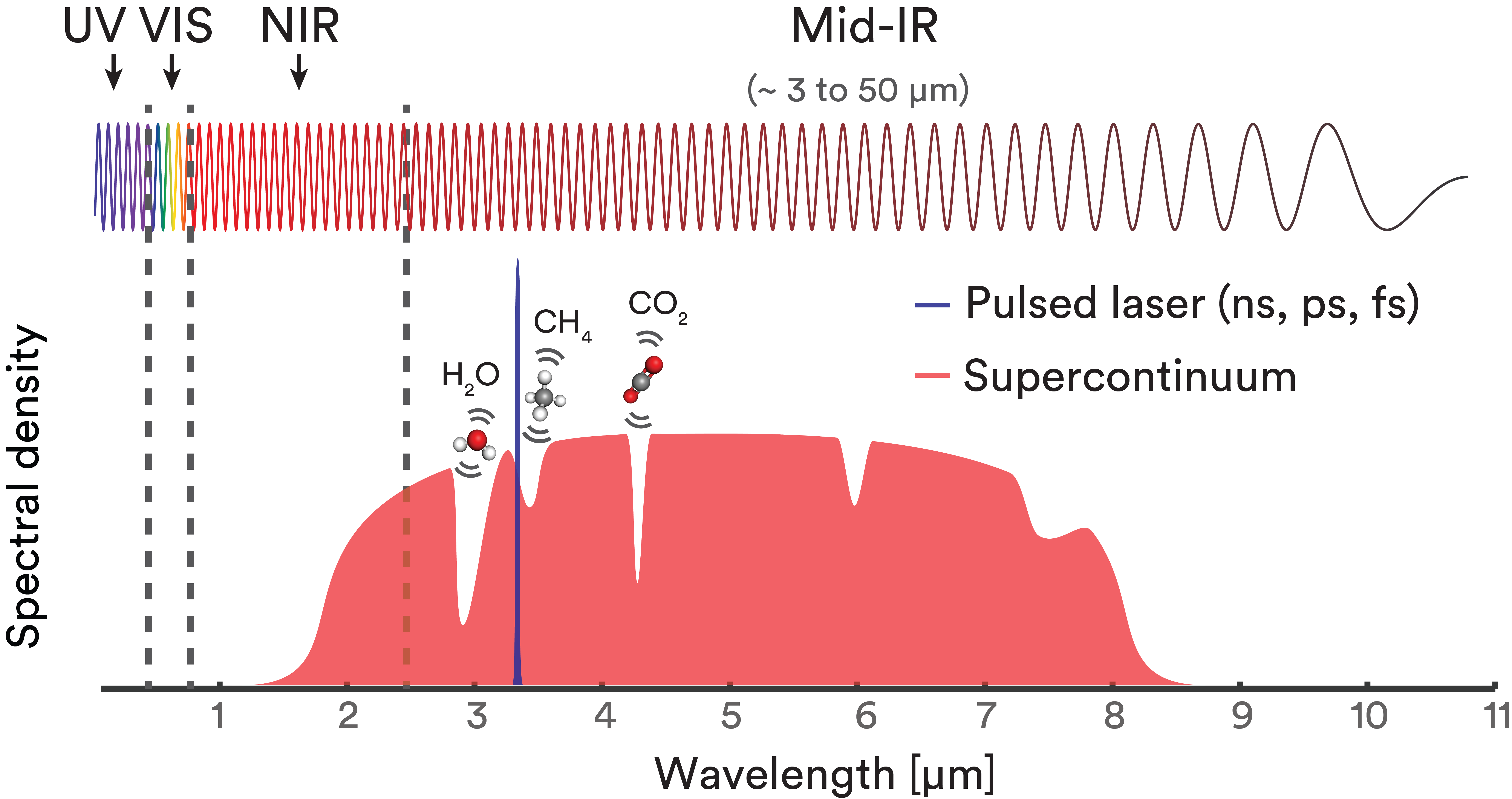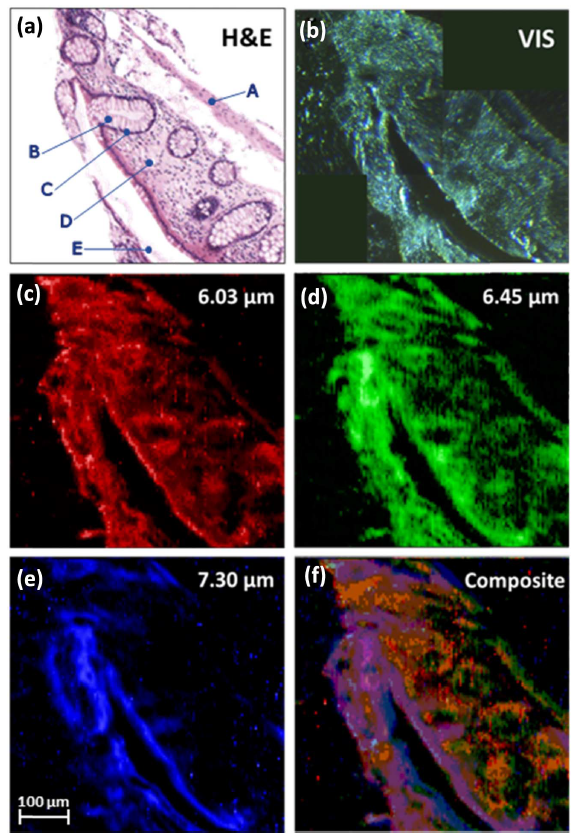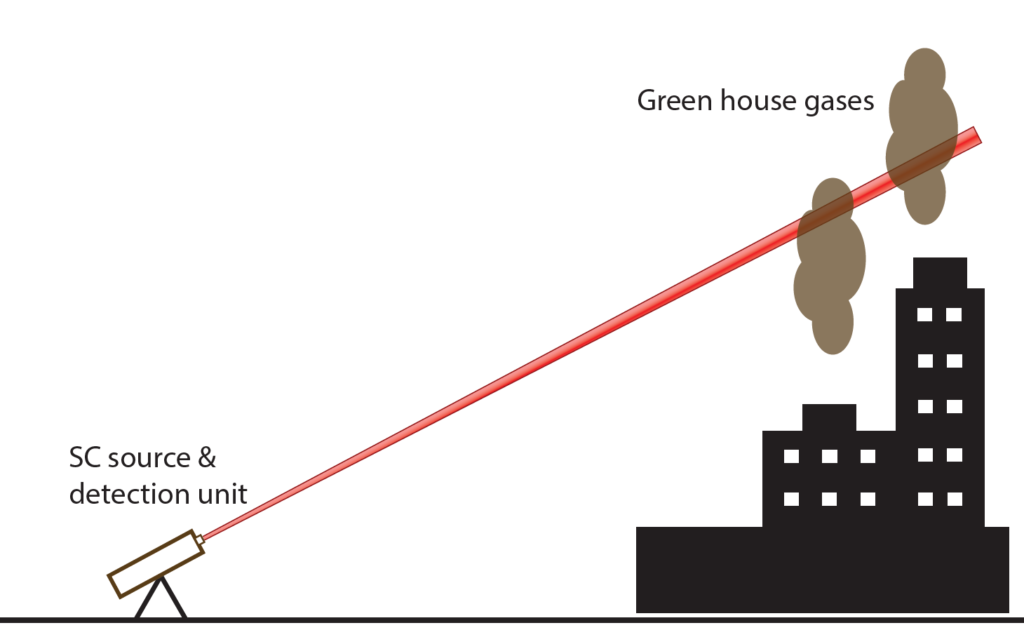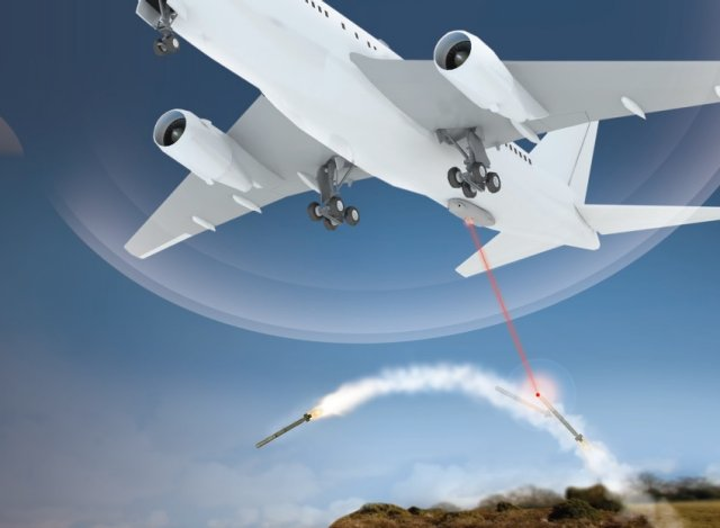What is a supercontinuum ?
A supercontinuum (SC) source is typically a pulsed laser (in the nanosecond, picosecond or femtosecond regime) that is converted into an optical signal having a very broad spectrum, as illustrated in Fig. 1. As compared to standard illuminating broadband light sources like a lamp, a LED, or even the sun, supercontinuum sources have one of the biggest inherent advantage of lasers: they are directional and, in some case, coherent. This type of lasers can thus be efficiently injected and guided in an optical fiber, collimated over large distances, or even focused within a very small spot, which significantly increases their brightness as compared to other broadband sources.

What are the applications of mid-infrared supercontinuum?
The mid-infrared spectral region is the most interesting region for the development of SC sources since it contains the fundamental absorption of several materials and molecules. Mid-IR SC lasers thus find applications mostly in imaging and spectroscopy. Here are some of their most promising applications.
Optical coherence tomography
Optical coherence tomography (OCT) is an imaging technique that uses the scattering properties of light in a diffuse medium to image objects in volumes with a very high precision. This technique is largely used for medical imaging and industrial non-destructive testing (NDT).
Optical coherence tomography in the mid-IR allows for higher penetration depths and increased resolution as compared to conventional near-IR OCT [1]. The main reason is simple: there is lower scattering loss at longer wavelengths.
As shown in figure 2, electronic chips inside your favourite Mastercard or Visa credit card are made of highly scattering polymer layers, silicon microprocessor and small circuitry that can be better imaged in volume using a mid-IR SC source as compared to a standard near-IR OCT imaging system.

Hyperspectral imaging
On the other hand, the distinct IR absorption features of materials and biological tissues give another dimension for diagnostic in microscopy and bioimaging. Hyperspectral imaging techniques based on supercontinuum sources collect the spatial and spectral information of materials with much more signal-to-noise ratio than standard IR imaging techniques based on FTIR because of the high brightness of these lasers. It is a big advantage when different types of materials or tissues must be sorted or differentiated in the same image for detecting cancers or anomalies [2]. Figure 2 shows an example of a multispectral image of a colon tissue obtained with a mid-IR SC and compared with a visible and a confocal image.

Remote sensing
Mid-IR supercontinuum lasers also find applications in remote detection and identification of multiple gas in a volume because of their broadband nature that can covers fundamental absorption of the most common gas like CO2, methane, ammonia, etc. These sources can thus be used to monitor green house gas emission coming out of refineries, factories, or other industrial buildings. A simplified example of such application is presented in Figure 4. SC sources are also used for remote detection and characterization of combustion systems [3] or explosives [4].

Infrared countermeasures
The 3-5 µm atmospheric transmission window is a region of interest for defense applications. Some of the most recent heat-seeking missiles (Stinger, Sidewinder, etc.) includes infrared detectors that guide these missiles through a specific target.
The detectors used in such missiles are very sensitive to high temperature parts of airborne vehicles like the rotors or the nozzles, which have their black body emission around 4 µm.
One way to counteract these missiles and make them miss the target is to blind their integrated detectors with broadband, high power mid-IR SC sources [5]. These directional infrared countermeasure (DIRCM) systems that include a SC laser are placed on airborne vehicules in a similar fashion as in Fig. 6 and have a rotating arm to scan a very broad volume around the plane or the helicopter.

Ultrafast photonics
Last but not the least, mid-IR SC are also extensively used or studied in optics laboratories for stabilizing frequency comb lasers [7] or generating few cycle pulses in the mid-IR [8]. For most of these applications, the coherence properties of the mid-IR supercontinuum is crucial.
How to generate a mid-infrared supercontinuum ?
Supercontinuum are generated from nonlinear processes in a highly nonlinear medium within a very confined space where the intensity of the seed laser is high. Such process depends on the input laser properties as well as the dispersion and the nonlinear properties of the medium [9]. The physical mechanisms involved in the generation of supercontinuum are very complex and are the subjects of an intensive field of research in nonlinear optics. The two main methods for generating a mid-IR SC source are the following:
Direct pumping in the mid-IR
The method consists of focusing a high peak power, short pulse, mid-IR laser into a highly nonlinear medium like chalcogenide fibers, germanium, silicon , etc. The complexity of this method resides mainly of the availability of a simple, short-pulse, mid-IR laser seed. Furthermore, high coherence and high pulse-to-pulse stability can be achieved when femtosecond lasers are combined with normal dispersion nonlinear medias.
Cascaded processes in optical fibers
The method consists of injecting a ns or ps near-infrared seed laser into a series of passive or active fibers with extended transmission in the mid-IR. Although near-IR seed lasers are very cheap and simple, only a small fraction of the converted light successfully reaches the mid-IR spectral region. New efficient fiber amplifiers can significantly increase this conversion ratio to the mid-IR.
What are the requirements for most applications ?
The applications listed above require compact, low-cost supercontinuum sources with high brightness (high pulse energy or average power), high spectral coherence (in some applications only) and high pulse-to-pulse stability.
If you want to learn more information about how Femtum can help reaching those requirements with its pulsed fiber lasers/amplifiers products and its in-amplifier approach for broadband mid-infrared generation, feel free to contact us.
References:
[1] N. M. Israelsen et al., “Real-time high-resolution mid-infrared optical coherence tomography”, Light: science & applications, 2019, vol. 8, p. 1-13.
[2] C.R. Petersen et al., “Mid-infrared multispectral tissue imaging using a chalcogenide fiber supercontinuum source”, Optics Letters, 2018, vol. 43, p.999-1002.
[3] T. Werblinski et al., “Supercontinuum based absorption spectrometer for cycle-resolved multiparameter measurements in a rapid compression machine”, Applied Optics, vol. 55, p. 4564-4574.
[4] M. Kumar et al., “Stand-off detection of solid targets with diffuse relfection spectroscopy using a high-power mid-infrared supercontinuum source”, Applied optics, vol. 51, p. 2794-2807.
[5] H.H.P.T. Bekman et al., “Development of a mid-infrared laser for study of infrared countermeasures techniques”, Proc. SPIE 5615, 2004, p. 27-38.
[6] https://www.intelligent-aerospace.com/commercial/article/16538271/elbit-systems-wins-265-million-contract-to-supply-advanced-infrared-countermeasure-systems-for-widebody-jets
[7] D. D. hickstein et al., “Ultrabroadband supercontinuum generation and frequency-comb stabilization using on-chip waveguides with both cubic and quadratic nonlinearities”, Physical Review Applied, vol. 8, 2017, p. 014025-1 – 014025-8.
[8] R. I. Woodward et al., “Generation of 70-fs pulses at 2.86 um from a mid-infrared fiber laser”, Optics Letters, 2017, vol. 42, p. 4893-4896.
[9] J. M. Dudley et al., “Supercontinuum generation in photonic crystal fiber”, Reviews of modern physics, 2006, vol. 78, p. 1135 – 1184.
